To develop a SaaS application, you must conduct research and discovery, choose monetization models and tech stack, plan/manage development, and provide application maintenance. The process is like any other software/app development process; the only difference is the type of application. What type of SaaS solution you are building also affects the development process and strategy in different ways.
Hence, it is crucial to choose the right strategy and type of SaaS to make your business part of a rapidly growing market.
To ensure success, you must evaluate various types of SaaS software solutions like Enterprise Resource Planning (ERP), Content Management System (CMS), Customer Relationship Management (CRM), Sales, Marketing, e-commerce, and Project Management Software. Only then can you reap the benefits like better flexibility, accessibility and scalability, cost-effectiveness, and easy maintenance.
Get started on the process here by learning some insightful practices to build a successful SaaS application.
6 Easy Steps to Build a SaaS Application
With advantages like easy and faster implementation, lower or no maintenance costs, easy updates, and less/no configuration costs, it becomes crucial to understand how to build a SaaS product even if you are hiring a development team. It will help you plan and manage the process better when you initiate the project.
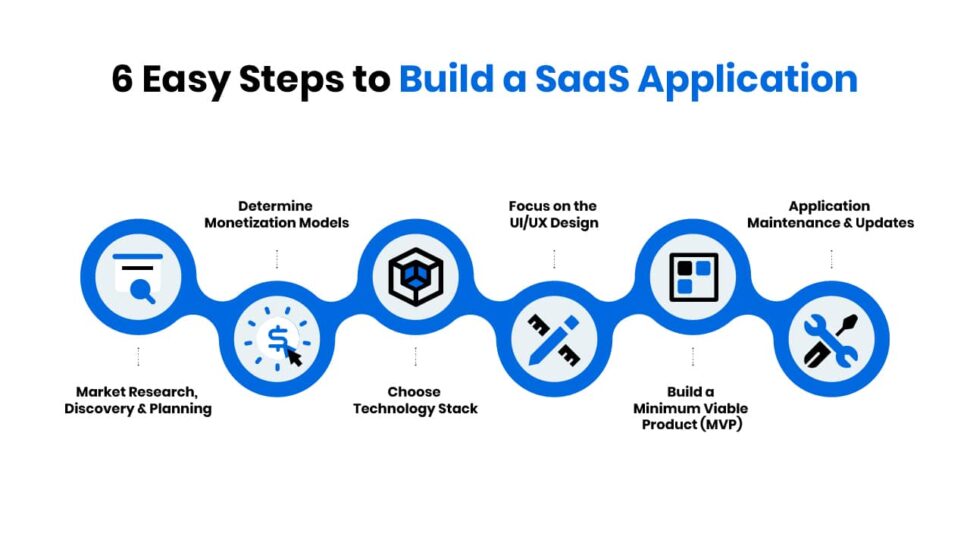
Market Research, Discovery, and Planning
Market research allows you to discover the latest SaaS technology trends for different SaaS product examples like Vertical or Horizontal SaaS products. It helps understand the competition, target audience, project strengths and weaknesses, and risks associated with the project.
Once you evaluate such factors, your business analyst can move forward with an official risk assessment and mitigation strategy, software requirements specification (SRS), application feature evaluation document, and development project cost estimation. This concludes market research and discovery for your SaaS development process.
The next step is the actual planning of the SaaS platform development process and strategies. With market research and discovery, you can effectively plan a strategic development process to ensure the outcome of the SaaS project is more lucrative for your organization.
Determine Monetization Models
Incorporating monetization models in the SaaS application is crucial to generate revenue and monitoring the ROI of your project. They are tools that will allow you to measure the success of your strategies, investments, and efforts.
You can use various monetization models like Freemium, Payment Charges, Paid Advertising, and in-app promotions.
The Freemium Model
It provides basic/core features of the SaaS product for free, but the advanced features and functionality are only available to those who purchase the premium subscription.
Payment Fees
You charge a small fee on every payment made and received by the users on the SaaS application.
Paid Advertising
Including and personalizing ads from different brands is one of the best monetization models. You can make it more interesting by offering users rewards or access to some advanced features when they watch a video ad.
While these are the most popular monetization models, evaluating your target users and their needs will help you plan and incorporate more, increasing the business revenue significantly.
Choose Technology Stack
The next step in the software-as-a-service development process is choosing the right technology stack for the project.
What is a SaaS platform development technology? It is the technology you need for software architecture like application server, front end, database, and backend to create a stable SaaS system.
Since SaaS is a cloud technology-based solution, you can use AWS Cloud, Microsoft Azure, and Google Cloud.
For the backend, you can also use databases like MySQL, PostgreSQL, or MongoDB.
For the server-side and application server, you can use frameworks like Python, PHP, Ruby, and Nginx.
The SaaS front end will need HTML, JavaScript frameworks, and CSS.
These are some technologies you can use for SaaS cloud software development. However, you may need different ones, more, or less according to your requirements with SaaS application architecture, chosen developers, and business goals.
Focus on the UI/UX Design
When building any application/software, the UI/UX design is always important as it determines the visual experience and ease of use of your SaaS application. The fastest and easiest way to create a good application design is by researching target users.
- How do they use an application? (User Journey)
- Which functionalities make the user experience more convenient or inconvenient for them?
- Which visual element like color combination or graphic do they prefer?
- What kind of ease of use do the applications of your competitors provide?
Such information will help you create a memorable user interface and experience for target users, which can lead to faster user acquisition, retention, and brand loyalty.

Build a Minimum Viable Product (MVP)
Building an MVP SaaS application allows you to build functional software with core features that can deploy quickly. How does it help? A minimum viable product can help you lower costs, accelerate development, and understand the practical potential of your application without wasting too much time, money, and effort.
Your SaaS development company will work on the frontend, backend, server, and database while the QA engineers/testers ensure the application meets all the standards.
The MVP SaaS application will meet all the primary needs of your target user base. It also helps you gather valuable and insightful feedback from the first batch of users to identify strong and weak points in your application, allowing you to further improve it with new features, UI/UX design changes, and security patches.
Expert Notes:
For faster and quality-driven development, industry experts recommend Agile methodology for SaaS application development. The incremental and iterative approach in Agile allows you to build a quality MVP product a lot faster and at much lower costs.
Application Maintenance and Updates
After deployment, your primary goal is to ensure the application performance is stable and satisfactory for all users without any errors. It will require regular SaaS app maintenance and updates with new features and security patches.
The feedback from target users will also help you identify factors in the app that need immediate attention and improvements, while maintenance will help you deal with bugs, errors, and UI/UX design issues in the SaaS application.
You develop a SaaS application of quality for generating a user base and revenue faster, and you maintain and update the app regularly to ensure the user base and revenue keep increasing every day.
Conclusion
As mentioned before, you need a strategic approach driven by research, factual data, effective planning and management, and skilled SaaS developers to build a SaaS application. It is the only way you can create an application that succeeds and survives the competition by standing out.
However, you can simplify the whole process by hiring an all-in-one software development company that can manage every stage of development to deliver a quality-centric SaaS application, promising a lucrative outcome for your business.
Frequently Asked Questions
Research the target audience and user base, find a capable development team, create a plan, focus on the UI/UX design, conduct application testing, and provide regular maintenance.
SaaS products are developed with market research, planning, and a strategic development process that ensures lucrative outcomes.
Accessibility and Scalability are the 2 basic components of SaaS.
ReactJS, Angular, Vue. js, Node. js, Laravel, Symfony, and Django are the best frameworks for building a SaaS product.














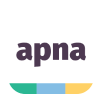
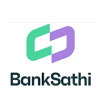
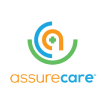
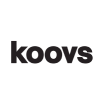
.png)
.png)
.png)



Leave a Comment